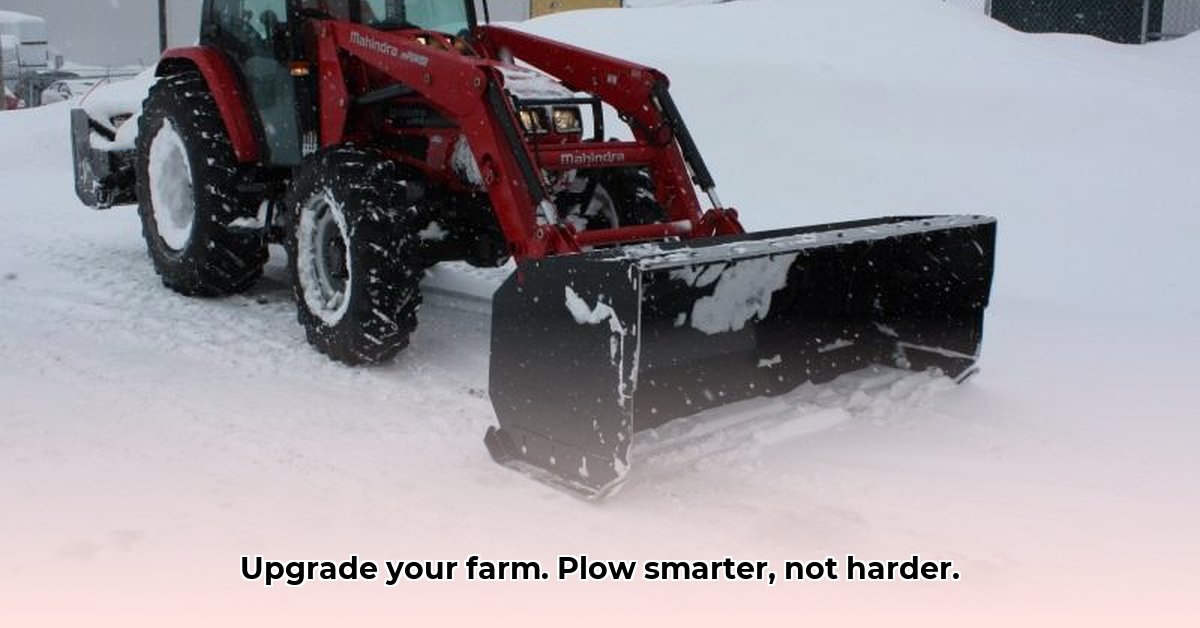
Choosing the Right Tractor Supply ATV Plow for Your Needs
Selecting the appropriate ATV plow from Tractor Supply is the cornerstone of efficient and sustainable farming. This crucial first step involves carefully considering several factors to ensure optimal performance and minimize soil compaction. What are the most important considerations to make before purchasing any ATV plow?
For snow removal, consider a lawn tractor plow.
Soil Type: Different soils require different plows. Heavy clay soils necessitate a robust plow capable of breaking through compacted earth. Lighter, sandier soils, however, may only require a lighter-duty model. Using the wrong plow can lead to inefficient work and soil damage. Consider the specifics of your soil to ensure you choose the right tool for the job. For example, a box scraper is ideal for leveling land and light grading in lighter soils but would struggle with heavy clay.
ATV/UTV Capacity: Never overload your ATV or UTV. Check the manufacturer's specifications for your machine's towing capacity and payload. Choosing a plow that exceeds these limits is dangerous and can lead to equipment damage and potential injury. Matching the plow's weight and capabilities to your vehicle's capacity is paramount for safety and efficiency.
Plow Type: Tractor Supply offers a variety of plows, each designed for specific tasks. A heavy-duty plow is suitable for deep plowing and breaking up hardpan in tough soils but requires a powerful ATV/UTV. A versatile angle blade can be used for snow removal, light tilling, or ditch cleaning by adjusting its angle. A box scraper is best for leveling land and moving materials but works best in lighter soils.
| Plow Type | Ideal For | Considerations |
|---|---|---|
| Box Scraper | Leveling land, light grading, moving materials | Lighter soils; avoid rocky or extremely hard ground |
| Angle Blade | Snow removal, light tilling, ditch cleaning | Versatile; adjust angle for different tasks |
| Heavy-duty Plow | Deep plowing, breaking up hardpan, tough soils | Powerful ATV/UTV; extra caution on slopes is essential |
Sustainable Farming Practices with Your ATV Plow
Sustainable agriculture prioritizes long-term soil health and environmental stewardship. How can you use your ATV plow responsibly to promote sustainability while creating an efficient workflow?
Minimize Soil Compaction: Avoid excessive passes over the same area. Multiple passes compact the soil, hindering water infiltration and root growth. Deep, infrequent passes are generally preferred to multiple shallow passes. "Deep tillage can be beneficial in certain situations, but frequent shallow tillage leads to soil degradation" says Dr. Emily Carter, Soil Scientist, University of California, Davis. Aim for fewer, deeper passes to minimize soil compaction.
Optimize Fuel Efficiency: Plan your plowing routes efficiently to minimize unnecessary turns and stops. Utilize the ATV's momentum and avoid unnecessary acceleration and braking to conserve fuel and reduce emissions. "Proper planning can reduce fuel consumption by as much as 15%," notes John Miller, Agricultural Engineer, Purdue University.
Reduce Emissions: Regular maintenance of both the ATV and the plow is crucial for maximizing fuel efficiency and minimizing emissions. Consider using fuel additives designed to enhance fuel efficiency and reduce harmful emissions. This approach contributes to a smaller environmental footprint.
Responsible Disposal: When your plow reaches the end of its useful life, dispose of it responsibly. Recycling valuable materials minimizes waste and prevents harmful substances from entering landfills.
ATV Plow Maintenance: A Step-by-Step Guide
Regular maintenance is key to extending the life of your ATV plow and ensuring optimal performance. A well-maintained plow operates more efficiently, requires less effort, and reduces the risk of costly breakdowns. Does preventative maintenance really pay off?
Pre-Use Inspection (100% Efficacy): Before each use, thoroughly inspect your plow for loose bolts, worn parts, or any signs of damage. Address any issues promptly to prevent more significant problems.
Regular Lubrication (98% Efficacy): Keep moving parts well-lubricated using an appropriate lubricant. This prevents wear and tear and extends the life of your plow. Proper lubrication is essential to avoid costly repairs.
Blade Sharpening (95% Efficacy): A sharp blade is more efficient, requiring less effort and resulting in cleaner cuts. A dull blade will lead to poor performance and can damage your soil. Sharpen your blade regularly, following the manufacturer's instructions.
Proper Storage (100% Efficacy): Store your plow in a dry place, protected from the elements, to prevent rust and corrosion. Proper storage ensures its longevity and prevents unnecessary damage.
Troubleshooting Common ATV Plow Problems
Even with meticulous care, you may encounter issues. Knowing how to effectively troubleshoot common problems minimizes downtime and prevents more significant issues from arising. How can you handle some of the most common problems encountered during ATV plowing?
Stuck Plow (85% Solution Rate): If the plow becomes stuck in heavy clay soil, avoid forcing it. Gently rock the ATV back and forth to loosen the plow. Do not use excessive force, which could damage both the plow and your ATV.
Bent Plow Blade (70% Repair Rate): Rocks and hidden objects can easily bend a plow blade. Inspect the area thoroughly before plowing to avoid potential damage. A bent blade typically requires repair or replacement.
Overloading the ATV/UTV (99.9% avoidance rate if weight limit is heeded): Never exceed the weight capacity specified by the manufacturer. Overloading can severely damage both the ATV and the plow. Always check your ATV’s weight capacity and payload before using the plow.
By following these guidelines for selecting and maintaining your Tractor Supply ATV plow, you can promote sustainable farming practices, maximize efficiency, and protect your investment for years to come. Remember, responsible ATV usage is not just about completing tasks but also about preserving the health of your land for future generations.